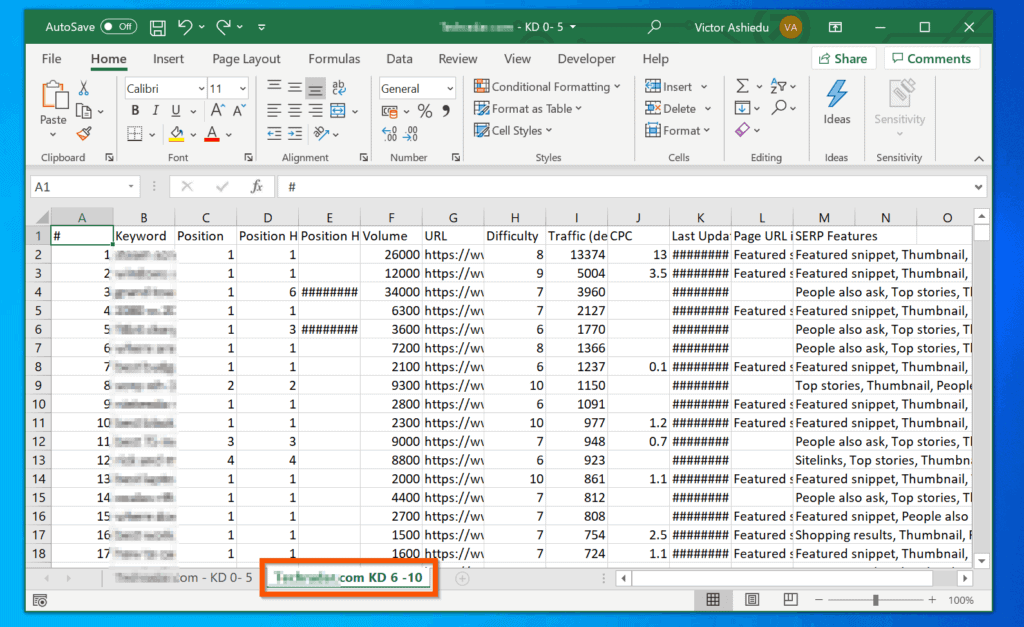5 Simple Ways to Merge Excel Sheets Easily

Spreadsheets like Excel are vital for data organization, tracking financials, or compiling project data, but handling multiple sheets can get overwhelming. Whether you're managing personal finances or conducting business analysis, you might need to merge various Excel sheets into one cohesive document. This article explores five straightforward methods to merge Excel sheets with ease, ensuring your data is both accessible and manageable.
Method 1: Using Excel's Consolidate Feature

The built-in Consolidate feature in Excel is perfect for merging data from multiple sheets into one sheet. Here's how you can use it:
- Open a new workbook or choose the sheet where you want to consolidate data.
- Go to the Data tab on the ribbon.
- Select Consolidate from the Data Tools group.
- In the Function drop-down, choose your desired calculation (Sum, Count, Average, etc.).
- Under Reference, select the data range from your first sheet.
- Click Add to add this range to your list.
- Repeat for all other sheets' data you wish to consolidate.
- Check Use labels in to ensure headers are consolidated as well.
- Click OK to merge the data.
📝 Note: Ensure that your column headers match across all sheets for seamless consolidation.
Method 2: Using Power Query

Power Query, an Excel feature, offers advanced data manipulation capabilities, including merging sheets:
- Select a cell in the destination sheet.
- Go to the Data tab and click Get Data > From File > From Workbook.
- Select your workbook containing the sheets to merge.
- In the Navigator, tick all sheets you want to merge.
- Click Load or Transform Data for further manipulation before loading.
📝 Note: Power Query excels at handling complex datasets with different structures or when data needs cleaning.
Method 3: Using Excel VBA Macro

Visual Basic for Applications (VBA) scripting allows for automated merging:
- Open Excel's VBA editor with Alt + F11.
- Insert a new module (Insert > Module).
- Paste the following VBA code:
VBA Code Sub MergeSheets() Dim ws As Worksheet Dim targetSheet As Worksheet Dim lastRow As Long Dim colNumber As Integer colNumber = 1 Set targetSheet = ThisWorkbook.Sheets("Sheet1") For Each ws In ThisWorkbook.Sheets If ws.Name <> targetSheet.Name Then lastRow = ws.Cells(ws.Rows.Count, "A").End(xlUp).Row ws.Range("A1:A" & lastRow).Copy Destination:=targetSheet.Cells(targetSheet.Rows.Count, colNumber).End(xlUp).Offset(1) colNumber = colNumber + 1 End If Next ws End Sub
- Adjust the VBA code to fit your specific merging needs.
- Save, close the editor, and run the macro by pressing Alt + F8 and selecting MergeSheets.
📝 Note: Customizing VBA can offer tailored merging solutions but requires some coding knowledge.
Method 4: Using External Tools

For those who find Excel's native features restrictive, external tools like EasyExcelMerger or online platforms can simplify the merging process:
- Download and install the merging software or open a merging website.
- Select the Excel files or sheets you want to merge.
- Choose merge settings (like matching headers or appending data).
- Preview or save the result.
📝 Note: External tools might offer more versatility or user-friendly interfaces for certain merging tasks.
Method 5: Manual Copy-Paste

Though the simplest, manual copy-pasting is useful for small datasets:
- Open both source and destination sheets in the same Excel instance.
- Select and copy the data from the source sheet.
- Paste it into the destination sheet, using options like Values Only, Formatting, etc.
- Repeat for all sheets.
📝 Note: This method is time-consuming for large datasets or frequent merging tasks.
Wrapping Up

In this post, we've covered several approaches to merging Excel sheets, from using Excel's built-in tools like Consolidate and Power Query to scripting with VBA and leveraging external applications. Each method has its advantages, making it suitable for different scenarios:
- Consolidate: Best for merging data with identical column structures across sheets.
- Power Query: Ideal for complex data manipulation and cleaning.
- VBA Macros: Provides automation and customization for regular merging tasks.
- External Tools: Offers a GUI for quick merging without deep Excel knowledge.
- Manual Copy-Paste: A go-to for one-off or very small datasets.
Remember, choosing the right method will depend on your specific needs, data structure, and how often you perform this task. Mastery of these techniques will streamline your data management, making you more efficient in your data analysis.
What if my Excel sheets have different structures?

+
Power Query in Excel is particularly useful for handling sheets with different structures. It allows you to transform and prepare your data before merging it into one coherent dataset.
Can I automate the merging process for a regular task?

+
Absolutely. Using VBA Macros, you can write scripts to automate the merging of sheets, which is ideal if you need to perform this task on a regular basis.
What are the limitations of Excel’s Consolidate feature?

+
The Consolidate feature is limited to merging data with identical structures and headers. Additionally, it doesn’t handle data transformation or cleaning as effectively as Power Query.